We had the opportunity to visit Mr. Pham Chi Manh's drum production facility when he and his wife were busy preparing the final stages to deliver the drums to customers. The skillful hands and 13 years of experience of the skilled craftsmen have transformed the jackfruit wood and rough buffalo leather into perfect products, not only beautiful in design but also precise in quality.
Tapping on the newly completed drum to test the resonance, Mr. Manh said: Each person will have their own perception of the drum sound. The sound of Doi Tam drums has its own range, especially the big drum and festival drums, which are always more deep and resonant. To create these sounds, the craftsman must have absolutely precise operations in handling the materials, from the manufacturing stage, arranging the drum, to choosing and processing buffalo skin, stretching the skin, and nailing.
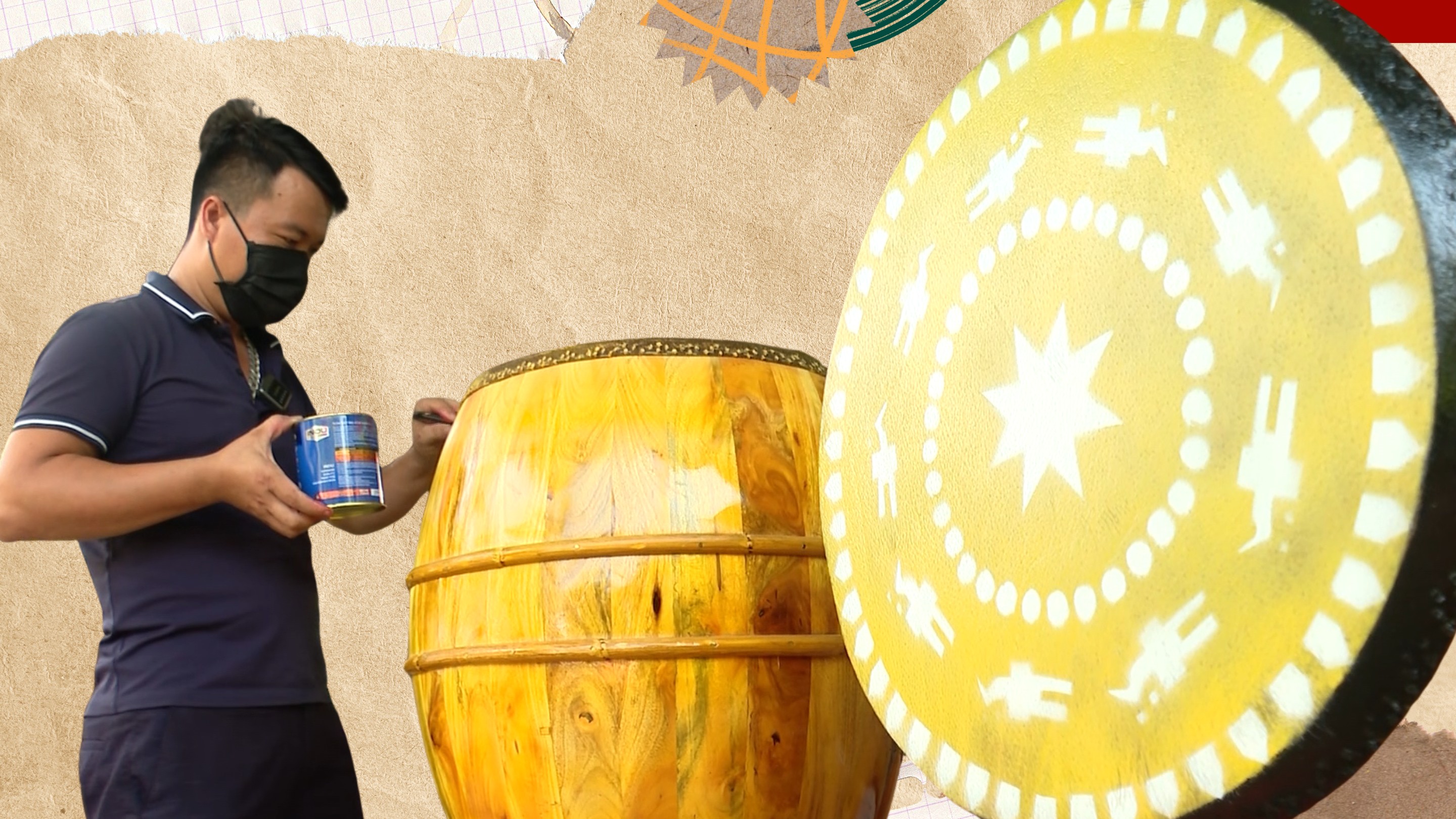
Taking a break, with a pot of green tea, Manh enthusiastically told the story of the traditional profession. Since 1963, his grandfather left Doi Tam village, Ha Nam province (old) - one of the famous drum-making places in the country to Thac Ba commune, Lao Cai province today to start a business and started selling and repairing drums. From a young age, Manh was attached to the sound of drums, from then on, the love for the profession gradually seeped into him without him knowing. At the age of 12, he was officially taught the profession.
“At that time, I was not able to make a complete drum, I only helped with simple steps like planing wood, drying the skin... but every time the finished drum sounded, I felt happy,” Mr. Manh recalled.
Until today, after more than a decade of officially pursuing the profession, Mr. Manh still maintains that love and passion. According to Mr. Manh, to make a drum, the craftsman needs to carry out three main stages: preparing the materials (jackfruit wood and buffalo skin) and creating the drum body; covering the drum (creating the complete drum) and finally finishing the product (painting, decorating). In these three stages, the selection of materials is important to determine the longevity and sound quality. The wood for the drum body must be old jackfruit wood, with firm, flexible grain. The buffalo skin must be old, thick, with ideal durability and tension.
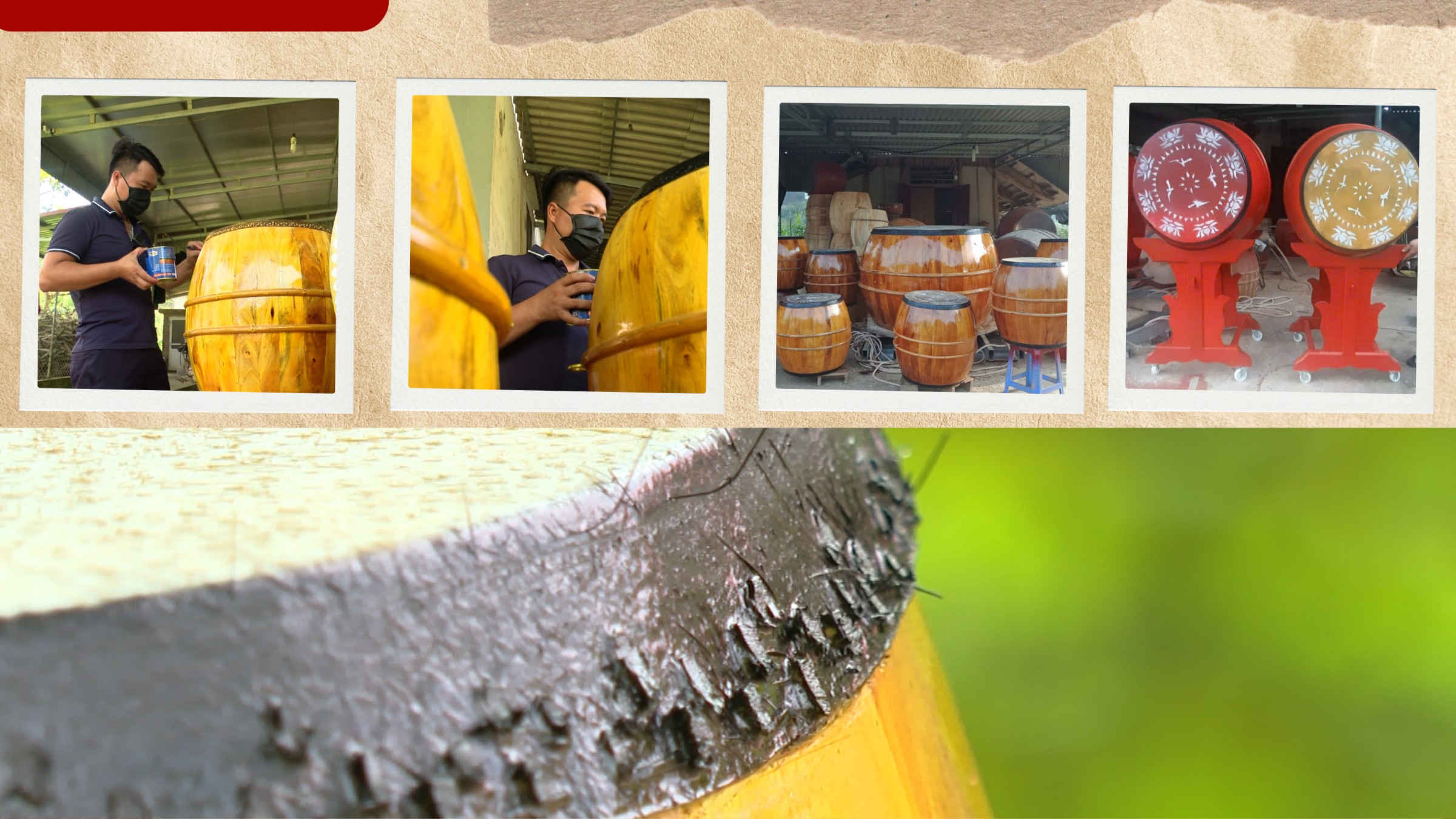
However, the most difficult and artistic step is holding the drum. "Holding the drum is not simply stretching the buffalo skin over the drum surface and then using pins to fix it to the drum body. It is a complex calculation of the tension and elasticity of the skin. The craftsman must skillfully pull the drum surface flat, reaching the correct tension so that when struck, the sound must be far-reaching and deep," Mr. Manh explained.
The craftsman must listen to the sound during the process of holding, adjusting each nail and each pull. The precision of this step determines the quality of the drum. This is a family secret that the craftsman must have learned over many years of working.
Currently, Mr. Manh makes drums of different sizes, mainly serving schools, festivals, art troupes, and religious establishments in the province. In addition, he also supplies drums to northern provinces such as Lao Cai , Phu Tho, Tuyen Quang... and many other provinces and cities in the country.
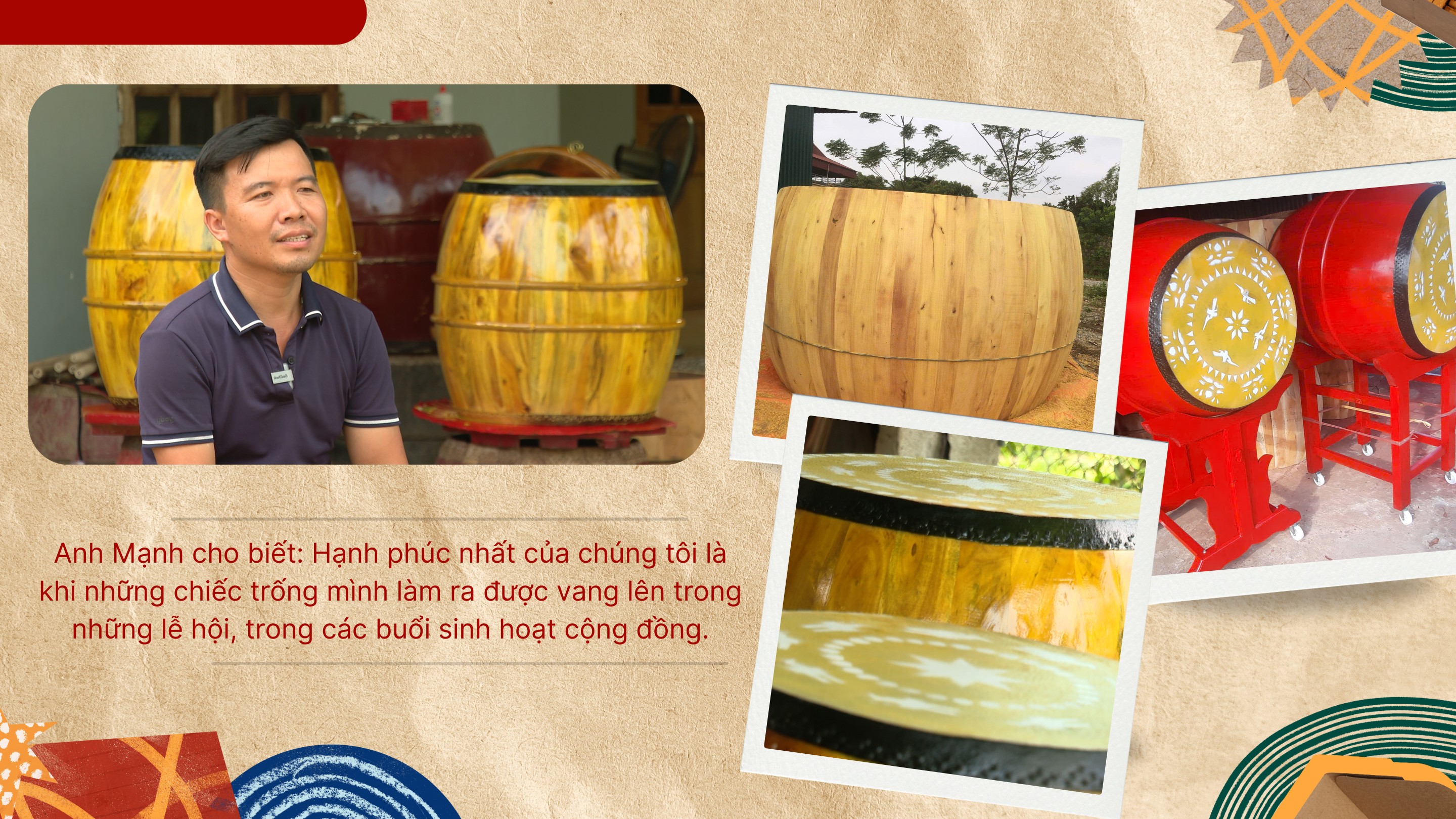
Drum making not only helps Mr. Manh's family have a stable income, creating regular jobs for 3-4 workers, but also contributes to promoting traditional culture, preserving the soul of the nation. "Drum making is a family profession, a part of the culture that our ancestors left behind. I also want to guide the next generation to try to preserve, maintain and promote this traditional profession. As a child of the Doi Tam drum craft village, our happiest moment is when the drums we make resonate in festivals and community activities!", Mr. Manh said proudly.
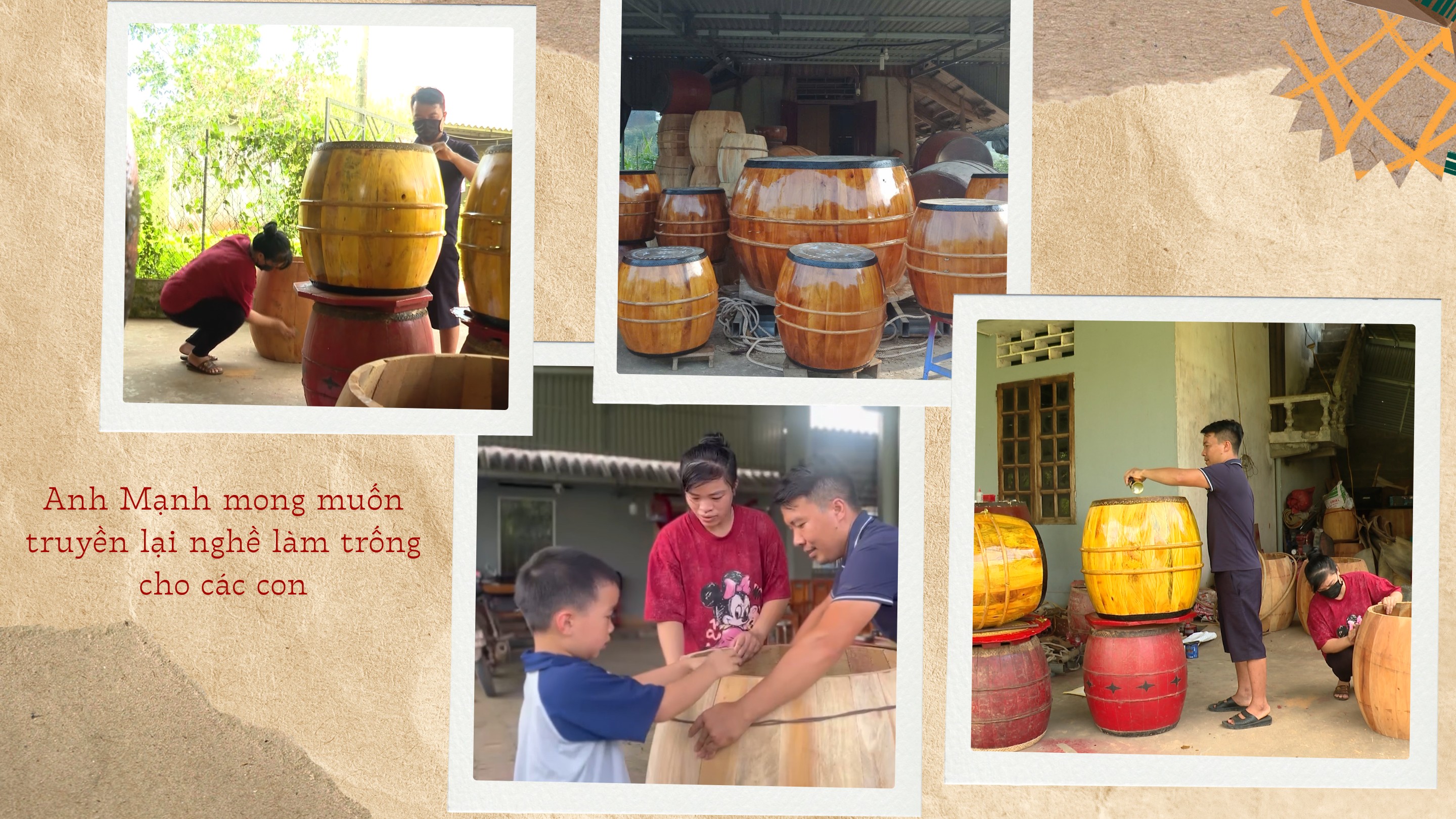
Preserving traditional crafts like Pham Chi Manh's family is not only a story of a profession but also a consciousness of preserving precious cultural values that our ancestors left behind, so that the sound of the drum always echoes like a silent cultural flow, existing in the midst of modern life.
Source: https://baolaocai.vn/giu-nghe-lam-trong-post885039.html



![[Photo] President Luong Cuong holds talks with South African President Matamela Cyril Ramaphosa](https://vphoto.vietnam.vn/thumb/1200x675/vietnam/resource/IMAGE/2025/10/23/1761221878741_ndo_br_1-8416-jpg.webp)
![[Photo] Prime Minister Pham Minh Chinh meets with South African President Matamela Cyril Ramaphosa](https://vphoto.vietnam.vn/thumb/1200x675/vietnam/resource/IMAGE/2025/10/23/1761226081024_dsc-9845-jpg.webp)
![[Photo] Prime Minister Pham Minh Chinh chairs meeting on railway projects](https://vphoto.vietnam.vn/thumb/1200x675/vietnam/resource/IMAGE/2025/10/23/1761206277171_dsc-9703-jpg.webp)

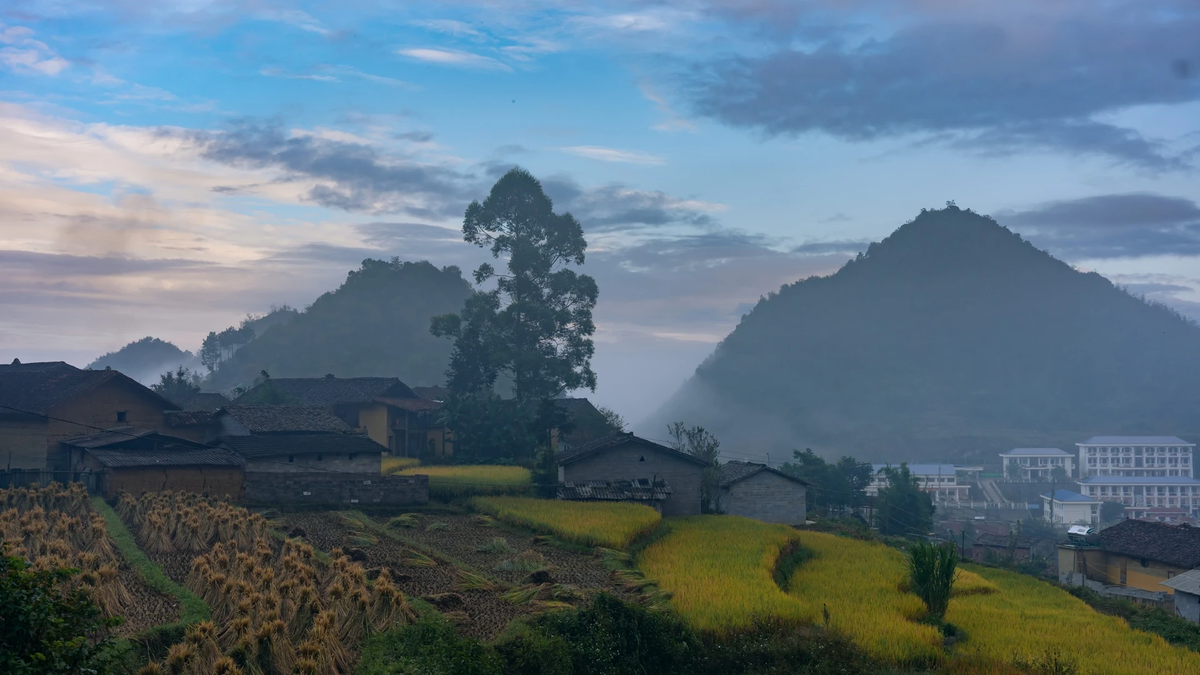
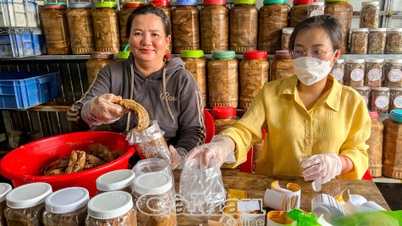

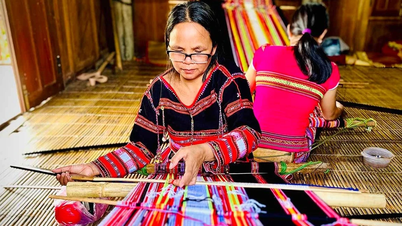



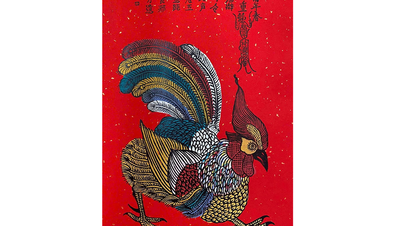

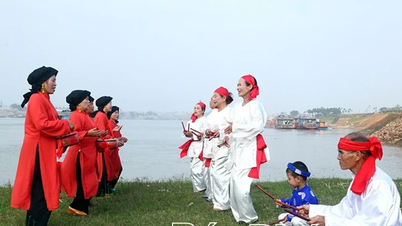

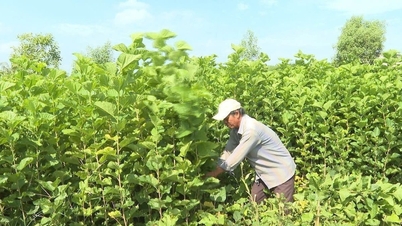



















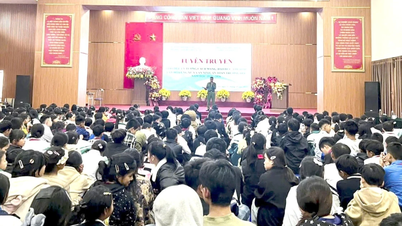








































































Comment (0)